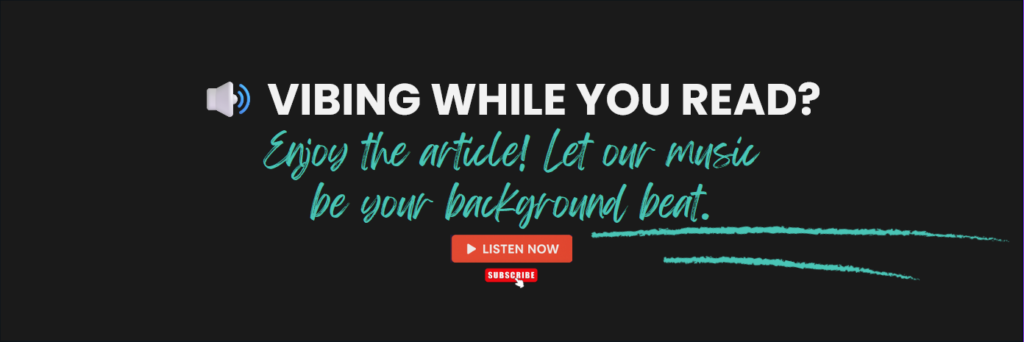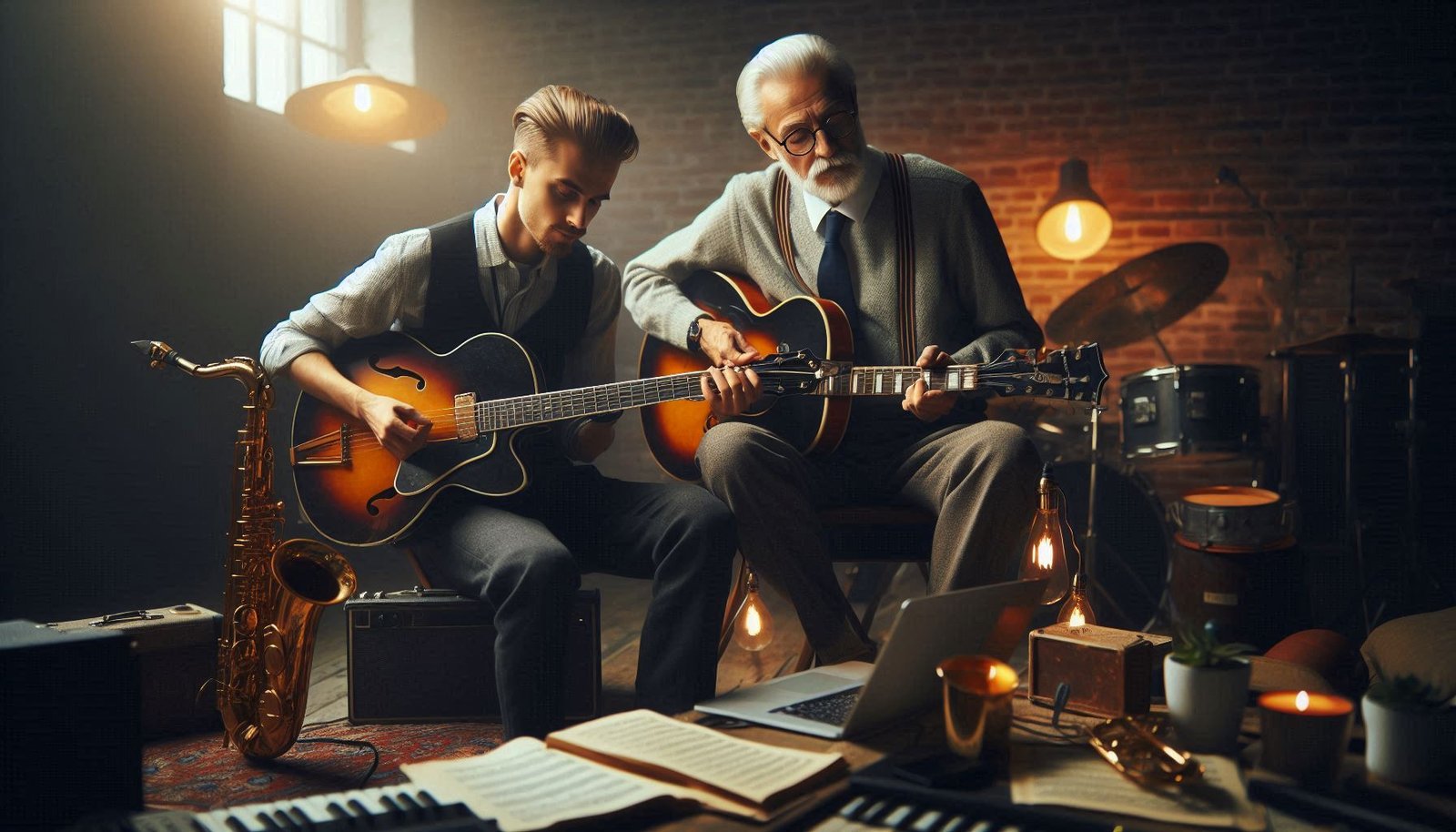
For decades, jazz seemed to be fading into the background, overshadowed by the rise of pop, hip-hop, and electronic music. Yet, in recent years, a new generation of musicians has breathed fresh life into this once-dominant genre, sparking a resurgence that’s captivating listeners around the world. Jazz, often considered a music of the past, is making a bold comeback, driven by young, innovative artists who are blending its classic elements with modern styles. In this article, we’ll explore how young musicians are leading the revival of jazz, why it’s resonating with today’s audiences, and what the future holds for this iconic genre.
1. A Brief History of Jazz: From the Roaring Twenties to a Quiet Decline
Jazz originated in the early 20th century, growing out of African American communities in New Orleans. It quickly became one of the most influential music genres, known for its improvisation, syncopation, and unique blend of African rhythms with European harmonic structures. By the 1920s, jazz had taken over the world, defining the “Roaring Twenties” and becoming a symbol of freedom, rebellion, and creativity.
Throughout the 20th century, jazz evolved through numerous sub-genres—swing, bebop, cool jazz, and fusion, among others—and gave birth to legendary musicians like Louis Armstrong, Miles Davis, and John Coltrane. However, by the 1980s, jazz started losing its mainstream appeal, largely due to the rise of rock, pop, and hip-hop. The genre seemed to settle into a niche, with a devoted but aging fan base. Many feared that jazz would forever be relegated to the background, preserved only by small clubs and specialized radio stations.
2. The Jazz Renaissance: Why Is It Happening Now?
Jazz is experiencing a surprising and exciting resurgence, and there are a few key reasons why this is happening today.
a. The Rise of Streaming Platforms
One of the biggest factors behind the revival of jazz is the democratizing power of streaming platforms. Spotify, Apple Music, YouTube, and others have made it easier than ever for listeners to discover music outside the mainstream. Younger generations are more curious and adventurous when it comes to their playlists, and many have stumbled upon jazz through algorithmic recommendations, playlist curation, or even TikTok trends. The accessibility of jazz on streaming platforms has allowed a new audience to engage with this rich and complex genre.
b. The Jazz and Hip-Hop Connection
Another crucial reason for jazz’s resurgence is its deep connection with hip-hop, one of today’s most popular genres. Hip-hop producers and artists have long borrowed from jazz, with its intricate rhythms, soulful melodies, and rich improvisation providing the perfect backdrop for rap lyrics. Artists like Kendrick Lamar, who heavily incorporated jazz elements in his critically acclaimed album To Pimp a Butterfly, have introduced jazz to younger listeners in a new, relevant way. This fusion of jazz and hip-hop has reignited interest in jazz as a genre with both historical depth and modern relevance.
c. Gen Z’s Taste for the Eclectic
Today’s youth, especially Gen Z, love to blend and mix genres. They’re less concerned with sticking to one sound or label and more interested in how different styles and influences can come together to create something new. This openness has led them to rediscover jazz, a genre that thrives on improvisation and fusion. Young musicians are taking the improvisational spirit of jazz and blending it with elements of hip-hop, R&B, electronic music, and more, creating hybrid sounds that feel both fresh and familiar.
3. Meet the Young Jazz Innovators: Shaping the Future
At the forefront of the jazz revival are a number of young, dynamic musicians who are redefining what it means to play jazz in the 21st century. Let’s take a closer look at some of these trailblazers.
a. Kamasi Washington
Kamasi Washington has been one of the most influential figures in the modern jazz scene. His 2015 album The Epic introduced a sweeping, cinematic approach to jazz, blending elements of classical, gospel, and hip-hop. Washington’s music speaks to both jazz purists and younger listeners who might be hearing jazz for the first time. His collaborations with artists like Kendrick Lamar have helped bridge the gap between jazz and hip-hop, making his music accessible to a wider audience.
b. Esperanza Spalding
Esperanza Spalding, a bassist and vocalist, has become a leading voice in the world of modern jazz. Known for her virtuosic playing and genre-defying approach, Spalding has consistently pushed the boundaries of what jazz can be. She won the Grammy for Best New Artist in 2011, beating out pop superstars like Justin Bieber, a testament to her crossover appeal. Spalding’s music is a blend of jazz, soul, and classical, and she’s a prime example of how young musicians are keeping jazz innovative and exciting.
c. Robert Glasper
Robert Glasper is another artist who has played a pivotal role in the resurgence of jazz, particularly through his blend of jazz, R&B, and hip-hop. His Black Radio albums, which feature collaborations with artists like Erykah Badu, Common, and Mos Def, have brought jazz to a new generation of listeners. Glasper’s music is soulful, funky, and rooted in jazz tradition, yet it feels completely modern and relevant to today’s musical landscape.
d. Nubya Garcia
A rising star from the UK, saxophonist Nubya Garcia has been making waves with her contemporary take on jazz. Garcia’s music blends jazz with Afro-Caribbean rhythms, paying homage to her cultural heritage while creating something entirely new. Her debut album, Source, was widely praised for its innovative approach to jazz and its ability to speak to both jazz enthusiasts and newcomers. Garcia is part of a thriving jazz scene in London that’s been at the forefront of the genre’s revival.
4. Jazz’s New Sound: Fusing Tradition with Modern Influences
One of the most exciting aspects of the jazz resurgence is how young musicians are fusing the genre’s traditional elements with modern influences. Jazz has always been a genre that thrives on innovation and improvisation, and today’s artists are taking that spirit to new heights.
a. Blending Jazz with Electronic Music
Many young jazz musicians are incorporating electronic elements into their music, creating a fusion that feels futuristic yet rooted in jazz’s improvisational traditions. Artists like Flying Lotus and BADBADNOTGOOD have been at the forefront of this movement, blending live jazz instrumentation with electronic beats and synths. This fusion creates a sound that appeals to both jazz aficionados and electronic music fans, bridging the gap between two seemingly different worlds.
b. Jazz and Social Commentary
Jazz has always been a genre that speaks to the social and political climate of its time, and today’s young jazz musicians are no different. Albums like Kamasi Washington’s Heaven and Earth and The Epic tackle themes of identity, inequality, and social justice, resonating with younger listeners who are passionate about these issues. Jazz’s ability to convey deep emotion and complex ideas through music makes it a powerful tool for social commentary, and today’s artists are using it to make their voices heard.
c. The Rise of Jazz Festivals
Another sign of jazz’s resurgence is the growing popularity of jazz festivals around the world. Events like the Montreux Jazz Festival, the Newport Jazz Festival, and newer festivals like Jazz Re
in London are attracting a younger, more diverse crowd. These festivals often feature a mix of traditional jazz acts and genre-blending performers, offering attendees a chance to experience the full spectrum of jazz’s evolution.
5. The Future of Jazz: What’s Next for the Genre?
The resurgence of jazz raises an important question: What’s next for the genre? As young musicians continue to push the boundaries, it’s clear that jazz’s future is bright, but it will likely look very different from its past.
a. A Genre Without Boundaries
Jazz’s future may lie in its ability to defy categorization. As more young musicians blend jazz with other genres, we may see the emergence of a sound that’s entirely genre-less. This new jazz won’t fit neatly into boxes like “bebop” or “fusion”—instead, it will be a fluid, evolving genre that borrows from various styles and influences, creating something entirely new.
b. Continued Relevance Through Innovation
Jazz has always thrived on innovation, and that will continue to be the key to its success. As long as young musicians are willing to take risks and experiment with new sounds, jazz will remain relevant. The genre’s resurgence is proof that it can adapt to changing musical tastes while still retaining its core identity.
c. A Global Movement
Finally, the future of jazz will likely be a global one. Young musicians from around the world are contributing to the genre’s evolution, bringing in influences from their own cultural backgrounds. This cross-pollination of ideas will ensure that jazz continues to evolve in exciting and unexpected ways, making it a truly global art form.
Conclusion: Jazz Is Back, and It’s Here to Stay
The resurgence of jazz, led by a new generation of young, creative musicians, is one of the most exciting developments in today’s music landscape. Whether through their fusion of genres, their incorporation of modern technology, or their commitment to social commentary, these artists are ensuring that jazz remains a vital, relevant genre. The future of jazz is bright, bold, and boundary-breaking, and if the current wave of innovation is any indication, this classic genre is poised for an exciting new chapter.


